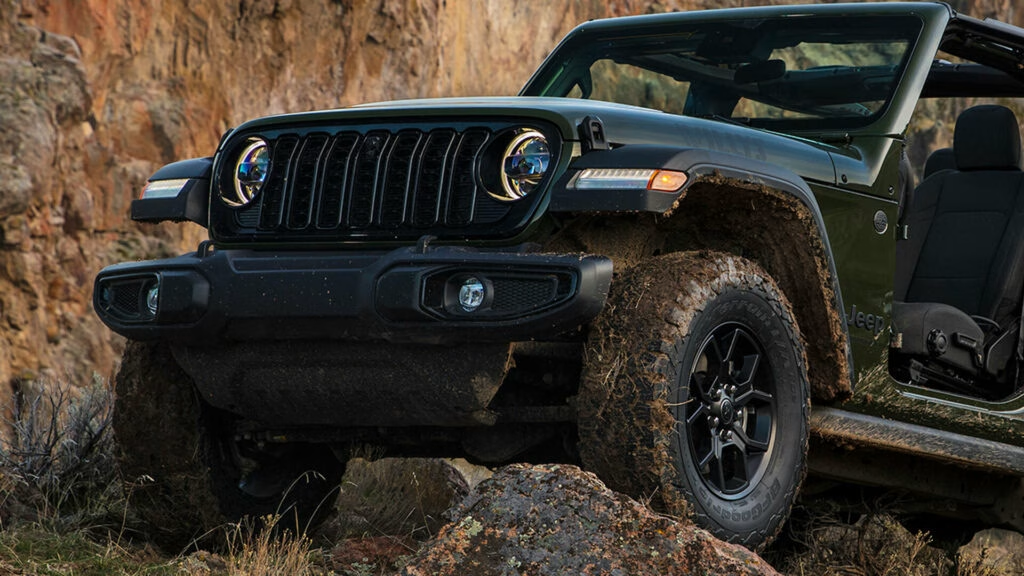Why Are So Many Jeep Wranglers Being Recalled Right Now?
If you drive a 2024 or 2025 Jeep Wrangler, you might’ve heard some buzz about a recent recall. Nearly 80,000 Wranglers are being called back due to a tire pressure monitoring system (TPMS) issue. Here’s the scoop: a cable in the system can get pinched during assembly, which means the warning light might not work when your tire pressure drops. For off-roaders who often air down their tires, that’s more than just a minor inconvenience—it’s a real safety concern.
What’s Actually Causing the Tire Pressure Warning Problem?
Digging into the details, the culprit is a remote start antenna cable that can get trapped under the left rear seat belt retractor bracket. When this happens, the TPMS might not detect low tire pressure, or the warning light could fail to come on at all. The National Highway Traffic Safety Administration (NHTSA) reports that Jeep’s parent company, FCA US, started investigating last October after noticing odd warning light behavior in some Wranglers. It took months, but by July, engineers pinpointed the assembly issue causing the cable pinch.
How Many Jeeps Are Really at Risk?
While the recall covers 78,989 vehicles, Jeep estimates that only about 1%—roughly 790 Wranglers—actually have the defect. Still, that’s not a number you want to ignore, especially when it comes to something as critical as tire pressure monitoring. According to the National Transportation Safety Board, underinflated tires are a factor in over 11,000 crashes annually in the US. Even if the odds are low, the consequences can be huge.
What Should Owners Expect from the Recall Process?
If your Wrangler is part of the recall, you’ll get a notice in the mail early next month. The fix is pretty straightforward: take your Jeep to a dealership, where a technician will inspect the remote start antenna cable and replace it if needed. Here’s the catch—Jeep’s dealer notice says the remedy isn’t available just yet. So, you might have to wait a bit before your local service center can actually perform the repair.
Is It Safe to Keep Driving Until the Fix Is Ready?
Understandably, you might be wondering if it’s okay to keep driving your Wrangler in the meantime. If your TPMS warning light seems to be working as usual, you’re probably in the clear. But if you notice the light acting up—or not coming on at all when you know your tire pressure is low—it’s smart to check your tires manually with a gauge before every drive. It’s a little old-school, but it works. And if you’re planning any off-road adventures, double-checking your tire pressure is a must.
How Does This Recall Compare to Other Recent Vehicle Safety Issues?
Recalls happen all the time, but the focus on TPMS is especially relevant as cars get more high-tech. According to a 2023 Insurance Institute for Highway Safety report, electronic safety systems are now among the top reasons for recalls in new vehicles. The Wrangler’s issue isn’t about fancy software glitches—it’s a simple assembly hiccup with real-world consequences. It’s a reminder that even tried-and-true vehicles can run into trouble when small details slip through the cracks.
What Can Jeep Owners Do to Stay Ahead of Safety Issues?
If you own a Wrangler, or any modern SUV, staying on top of recalls is just part of responsible ownership. Register your vehicle with NHTSA’s recall tracker or your manufacturer’s website, so you get alerts as soon as they’re issued. And don’t ignore those recall notices—dealers fix these problems for free, and it’s worth the hassle for your peace of mind.
The big takeaway? Vehicle safety isn’t about perfection—it’s about smarter adjustments. Start with one change this week, like checking your tire pressure manually, and you’ll likely spot the difference by month’s end.

